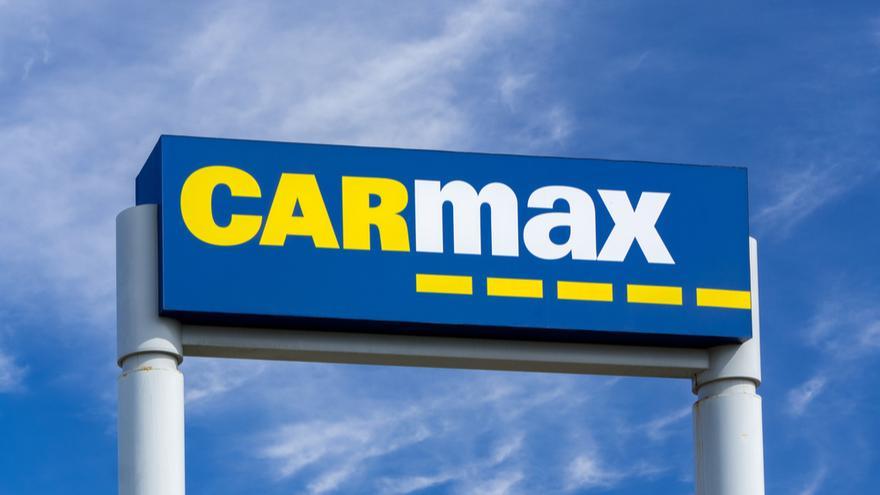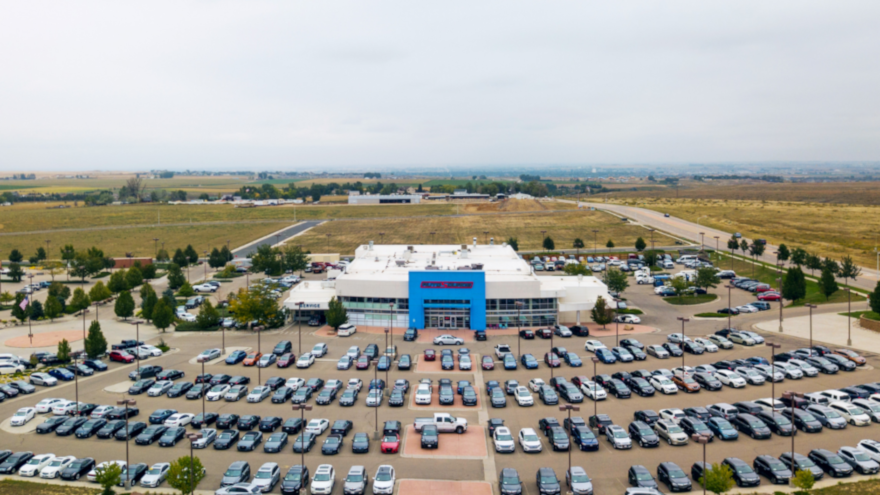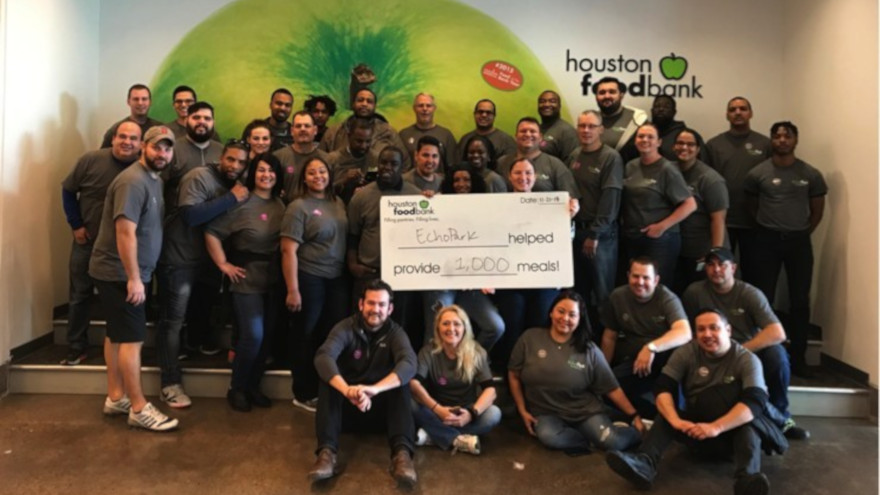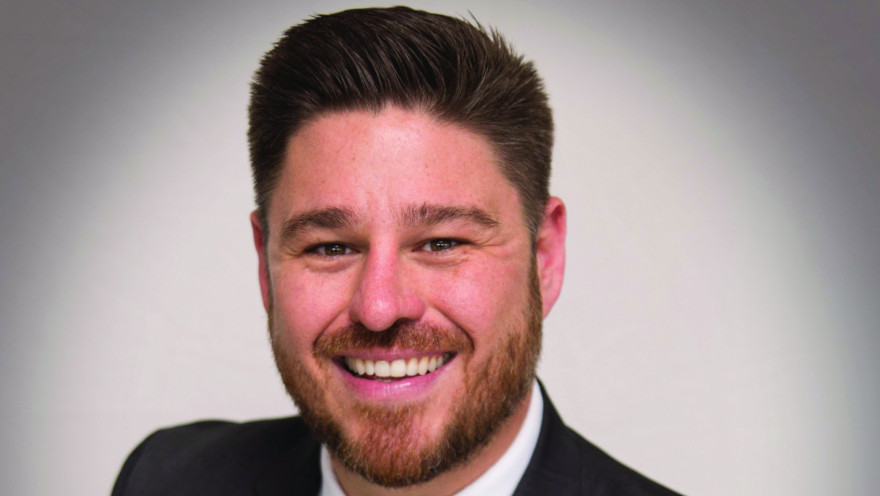CarMax’s used-vehicle unit sales in its fiscal third quarter were down 1.2 percent against comparable stores in the year-ago period.
But pre-tax earnings and earnings per share for the retailer were up, something president chief executive Bill Nash called a “testament to the strength of our diversified business model,” in a news release recapping CarMax’s quarterly performance for the period ending Nov. 30.
In a summary of the quarterly results, which were announced on Dec. 21, CarMax said pulled in net sales and operating revenue of $4.30 billion in its Q3, a 4.6-percent year-over-year gain.
Net earnings were at $190.3 million, up 27.9 percent. Net earnings per diluted share came in at $1.09, up 34.6 percent.
CarMax notes that its net earnings “benefited from a decrease in the effective tax rate to 23.2 percent from 33.9 percent in the prior year’s third quarter, primarily reflecting the effect of the Tax Cuts and Jobs Act of 2017 (the “2017 Tax Act”).”
Continuing on with some of the highlights of the period, CarMax increased its total used vehicle unit sales by 2.3 percent, moving 173,476 cars for the quarter. The aforementioned dip in comparable store used unit sales was due largely to softer store traffic, a trend partially balanced by better conversion.
A year ago, CarMax saw a lift in comparable store used unit sales helped by its six stores in the Houston area, following Hurricane Harvey. The company said that “excluding these stores from the calculation, our current quarter comparable store used unit sales would have grown by 2.3 percent.”
Elsewhere, CarMax saw a 10-percent hike in total wholesale unit sales, as it moved 110,403 of these vehicles for the quarter.
Income for the CarMax Auto Finance unit came in at $109.7 million, a 6.7-percent uptick.
“We are pleased to report solid growth in both pretax earnings and earnings per share, despite having soft comparable store used unit sales this quarter,” Nash, the CEO, said in a news release. “This is a testament to the strength of our diversified business model.
“We are also excited to introduce our omni-channel experience in Atlanta, where consumers can now customize their car buying experience, whether they want to buy a car completely from home, in-store or, most importantly, through a seamlessly integrated combination of online and in-store experiences,” he said.
That initial launch of the new CarMax buying experience in Atlanta was announced on Dec. 4. CarMax said at the time it plans on eventually making it available nationally to most customers by early 2020.
“We’re delivering on an unmet customer need for a car buying experience that is flexible, convenient, and fully personalized, with the ability for customers to get help when and how they want,” Nash said in a news release when the omni-channel experience was announced.
“The Atlanta launch is only the beginning. We plan to continuously improve the new omni-channel offering and scale nationwide. We anticipate having this new buying experience available to the majority of our customers by February 2020.”
Through the omni-channel offering, consumers are able to conduct their entire purchase from home — taking care of things like finance, appraisal and paperwork without going to the store.
CarMax will deliver to home or work and lets the consumer test-drive before the purchase is complete. Customers are not required to buy before the car is delivered.
They can also choose to utilize the in-store pickup after completing the majority of the deal online.
Shoppers can reserve a car for seven days; and if they buy, they can return it within seven days for a full refund.
Before the holidays arrived and political strife caused another federal government shutdown, Kerrigan Advisors released its third quarter report that highlighted dealership buy/sell transactions increased 20 percent year-over-year.
The Blue Sky Report generated by the firm also pointed out that 2018 will be the fifth consecutive year of more than 200 buy/sells transactions and among the most — if not the most — active years for buy/sells on record.
Kerrigan Advisors explained that the underlying catalyst for the robust buy/sell market is the growing U.S. economy. The firm mentioned the average dealership has achieved record sales during the last 12 months.
But Kerrigan Advisors also acknowledged potential future challenges to the economy and auto retail are also impacting the market, driving sellers who are concerned that today’s high valuations may not last into the next year.
The firm then stated these factors, combined with increasing consolidation that promises stiffer competition for smaller players, an increase in generational transfers, and a growing pool of investors, has set the stage for today’s robust buy/sell market.
“With rising interest rates and the changes coming to auto retail, we find sellers more motivated today, concerned that current valuations may not replicate in the future,” said Erin Kerrigan, managing director of Kerrigan Advisors. “And many of these sellers are willing to accept creative transaction structures as part of their exit in order to achieve their valuation goals, a new industry trend and one we expect to continue into 2019.”
Ryan Kerrigan, managing director of Kerrigan Advisors, added, “Capital markets are attracted to the sustainability and resilience of the dealership business model, even in the face of a more volatile stock market. These investors believe in the business case for consolidation, particularly as technology becomes an increasingly critical part of retailing and scale improves profitability.”
The firm noted another force contributing to an active buy/sell market is the generational shift occurring within the dealer body.
Kerrigan Advisors indicated much of auto retail is family-owned with most dealers being second generation or greater. The report noted that an estimated 50 percent of dealers are currently in the process of transitioning generations — something many will find challenging, particularly since the odds are stacked against them. The firm believes only 12 percent of family businesses make it to the third generation and only 3 percent to the fourth.
The report also determined that the domestics’ share of the buy/sell market increased in Q3 and will dominate the buy/sell market in 2019 due to their low blue sky multiples.
In addition, Kerrigan Advisors went on to mention high real estate values are, and will continue to be, a value driver of most buy/sell transactions. Millennials also have a key role to play in future valuations: according to the report, franchises with meaningful millennial market share are well positioned for future higher valuations.
The report’s bullish view of the market, however, is tempered by some concerns over the potential impact of higher interest rates and proposed tariffs.
“High import tariffs should be of great concern to auto dealers as they will have a negative impact on auto sales and franchise values,” Erin Kerrigan said. “Buyers will be unwilling to pay current blue sky multiples as earnings growth prospects turn negative. We can see no positive outcome from auto tariffs and encourage all industry participants to employ their political capital to ensure these tariffs are not implemented.”
Other highlights from the Q3 Blue Sky Report include:
— 179 dealership buy/sell transactions were completed in the first nine months of 2018, according to Kerrigan Advisors’ research and The Banks Report. This compares to 149 transactions in the first nine months of 2017.
— Year to date, domestics’ share of the buy/sell market increased to 52 percent, up 68 percent from 2015.
— The publics acquisition spending, year-to-date, declined 24 percent compared to 2017, although they are on track to spend $802 million on US dealership acquisitions, which would be the third highest year since the recession.
— While the number of smaller dealership groups shrinks, the number of larger dealership groups (greater than nine dealerships) has grown 50 percent since 2012.
— Private dealership groups continue to represent the largest share of dealership acquirers and are expected to do so for the foreseeable future. Of the estimated 296 franchises which changed hands in the first nine months of the year, 271 were acquired by existing private dealers and new private capital entrants to the market.
— Non-luxury and luxury import franchises saw their market share decline.
— Transaction pricing when including real estate remained at record levels through the third quarter of 2018, though average blue sky is down an estimated 10.3 percent from its 2015 peak. This decline in blue sky value is offset by the increase in real estate value.
The report also identifies three trends that are expected to impact the industry into the new year, including:
— Generational transfers increase the number of sellers coming to market.
— A growing pool of financial investors support consolidation and innovation.
— To achieve pricing goals, sellers increasingly accept structured transactions.
To download the entire report, go to this website.
Along with analyzing how dealership values are changing, one transaction involving the Ken Garff Automotive Group highlighted the Q3 edition of The Haig Report released this week by Haig Partners.
The report indicated the number of private dealerships that sold in the U.S. increased 26 percent year-over-year, rising from 84 to 106.
In one large transaction, the firm recounted the Ken Garff Automotive Group purchased full ownership of 28 dealerships from an affiliated entity that drove much of this increase.
Excluding this transaction, Haig Partners noted that the number of dealerships sold in Q3 decreased 7 percent year-over-year. Meanwhile, the report showed the number of dealerships sold during the first three quarters of this year jumped 24 percent compared to the same span in 2017.
Haig Partners added that acquisition spending in the first three quarters of 2018 by publicly traded auto retailers decreased 33 percent compared to the same period in 2017.
The report goes on to mention profits at privately owned dealerships during the past 12 months through September came in 2.6 percent lower than for the full year 2017, mostly due to rising costs.
Haig Partners lowered the estimated blue sky multiple ranges for 12 of the 22 franchises that it covers by 0.25 times-0.5 times to reflect lower offers from buyers.
The firm explained the reduction in blue sky multiples is a result of several factors, including falling profits, an increase in the number of dealerships available for purchase, and the potential of rising interest rates which could reduce investment returns.
When lower profits per dealership are combined with reduced blue sky multiples, Haig Partners estimated the value of a privately owned dealership fell 4.6 percent from year end 2017 to Q3 2018.
Other key findings from the Q3 2018 Haig Report include:
—Macroeconomic indicators such as GDP, employment, number of miles driven and consumer sentiment remain highly favorable for dealers.
—Other trends such as higher interest rates, higher average monthly car payments and declining dealership profits are hurting dealers.
—Private dealers are increasing their focus on used vehicles with volume up 4.4 percent through three quarters, even as new-vehicle sales are declining.
—Fleet sales are up 9.3 percent through three quarters, but retail sales were down 2.2 percent.
—Declines in new and used gross profits per vehicle are being offset by gains in F&I and fixed operations.
—Floorplan interest expense has swung from a credit of $119 per vehicle in 2015 to an expense of $58 so far in 2018.
—Total sales and gross profits continue to increase at dealerships, but expenses are rising faster leading to earnings declines at many public and private dealers.
—The average dealership pre-tax profit for the 12-month period that ended in Q3 was $1.36 million, down 2.6 percent from the close of 2017.
—Average estimated blue sky value per dealership dipped 4.6 percent in Q3 to $6.6 million compared to $6.9 million at the end of 2017.
—Potential threats from autonomous cars, ride sharing, and electrification have not yet had a measurable impact on dealership values, but dealers are increasingly thinking about these risks.
The firm added that more dealers are coming to the realization that scale will matter more in the future. They are preparing to “get big or get out,” according to the firm.
“The third quarter buy-sell activity was healthy but leveled out from the huge uptick we saw in the second quarter,” said Alan Haig, president of Haig Partners. “Auto retail continues to deliver attractive returns for dealers, particularly after the new tax code went into effect.
“Lenders are also bullish and we see them providing generous credit terms for most acquisitions,” Haig continued. “That said, there are many businesses for sale right now, and buyers are increasingly focused on the risks of higher interest rates in the future.
“As a result of having more choices and being more cautious, buyers are less aggressive than in prior years and they are reducing the multiple of earnings they are willing to pay for dealerships,” he added.
“Sellers with realistic expectations can still exit the industry with healthy valuations, but those who seek premium prices will likely sit unless they are located in booming markets like Texas and Florida,” Haig went on to say.
The Haig Report is published each quarter. Included in each edition are Haig Partners' blue sky multiples that can serve as a gauge for franchise values. To download the report, go to this website.
The AutoSource group of branded title vehicle dealerships announced its new chief executive officer late last week.
The company’s board of directors named former Santander Consumer, QCSA Direct and ADESA Impact executive Bradley Walsh to the CEO post, a move that was effective Oct. 15.
“It has been a tremendous honor to serve as founder and CEO of AutoSource. I am incredibly proud of everything our team has accomplished in the past 13 years,” AutoSource founder Luke Kjar said in a news release. “We have made substantial progress toward our company’s top initiatives.
“Since we started AutoSource, our focus on our most valuable assets, our employees and our customers, has allowed us to grow into an industry leader in the branded title space,” Kjar said. “I am very proud of what we have built, am excited about our future and look to Brad to help us continue on our successful path.”
Kjar will remain on AutoSource’s board and work with the company on strategic initiatives and market development.
AutoSource chairman Rob Wagman said: “Brad has been part of this industry for many years, and we are delighted to have him join the team. His experience within the automotive space between financing, salvage and dealer operations will help AutoSource exceed the goals we have set forth. I look forward to working closely with Brad while he helps set the direction of the company.”
As for Walsh, he was previously Santander Consumer’s senior vice president of asset remarketing. His experience also includes time as executive vice president and chief marketing officer for QCSA Direct, VP of business development at Cross Country Automotive Services and ADESA Impact’s VP of sales and marketing.
“I first want to thank Luke and the board for their confidence in me to manage this company. What Luke and the team have created is amazing, and their preparation for future success is incredible,” Walsh said.
“I am very fortunate to lead such a talented team. The market for specialty and branded title vehicles is growing exponentially, and we are fortunate to lead the way,” he said. “Our model impacts many markets and partnerships across the United States. Because of this, I am confident we will see our dealerships expand outside of our current footprint and provide new opportunities for our customers nationally.”
AutoSource began with one dealership in Woods Cross, Utah. Since its 2005 launch, the company has expanded to include eight locations throughout Utah, Idaho, Colorado and Nevada.
Last time Sonic Automotive expanded its line of EchoPark Automotive used-car stores, it added a location in the dealer group’s hometown of Charlotte, N.C.
This time, Sonic added an EchoPark location in the hometown of its president.
“I am excited to open the next EchoPark Automotive store in my hometown of Houston. We have spent considerable time and effort developing a pre-owned vehicle experience that delivers on our brand promise of value, honesty and transparency,” said Jeff Dyke, president of Sonic and EchoPark, in a news release.
“Since 2014, EchoPark has seen triple-digit growth, a great testament to the model and not only meeting, but exceeding customer expectations,” Dyke said.
This is the eighth location for the EchoPark standalone used-car store program. There are also stores in the Denver area; Charlotte, N.C.; Dallas and San Antonio.
“Our goal has always been to provide a guest experience that breaks the stereotype of the used car dealership. We are doing this with our outstanding associates and our state-of-the-art retail facilities,” Sonic chief executive officer David Smith said in a news release.
“Respect for our guests, a comfortable environment and vehicle inventories that meet our guest's needs are the foundation of EchoPark Automotive,” Smith said.
The EchoPark program has also focused making an impact in the individual communities where its stores are located, the company said. The team at the newest store, for instance, worked with the Houston Food Bank to deliver 1,000 meals for families in need heading into Thanksgiving.
"One of the most rewarding experiences for me has been seeing our team come together in training and in our volunteer efforts. We are excited to open our doors for Houston and let folks know what a great experience that our EchoPark Houston team is ready to provide them," EchoPark general manager Brian Faistenhammer said in a news release
The Jim Ellis Automotive Group wants everyone who comes to one of their showrooms to be in a giving mood like company leadership.
Jim Ellis is again partnering with the Marine Toys for Tots program, but the relationship has been amped up a few notches with the automotive group offering the chance to win gas cards and a grand prize shopping spree to individuals helping the dealerships bless children at Christmas this year.
All 17, Jim Ellis family owned and operated dealerships in Atlanta, Buford, Kennesaw and Marietta serve as collection sites for Toys for Tots and will be collecting toys through Dec. 15th at close of business. Each year, the Jim Ellis dealerships also partner with the Metro Atlanta Automobile Dealers Association (MAADA) as the association works with Toys for Tots to equip each of the Jim Ellis dealerships to serve as collection sites for this program.
The public can get involved in this initiative by bringing a new unwrapped toy to any of the Jim Ellis dealerships. These donations will go to make the holidays brighter for children in the surrounding communities in the hopes that every child will receive a gift this holiday season.
“Our Jim Ellis dealerships partner with MAADA and Toys for Tots year after year and have great success in collecting toys for children in need,” said Jim Ellis Automotive Group president and chief executive officer Jimmy Ellis. “This year we wanted to step things up a few notches and really make our customers and the local communities surrounding our dealerships aware of this initiative and how they can get involved.
“Christmas is a time of giving, and we want to do our part to make sure all children in our communities are blessed during the Christmas season,” Ellis continued.
As a way of saying thank you to individuals who contribute at one of the Jim Ellis locations to the Toys for Tots campaign this holiday season, the first 25 people who make a toy donation at each location will receive a $10 QuikTrip gift card.
Every customer that makes a qualifying toy donation during normal business hours through Dec. 15 will be entered for a chance to win a $2,500 shopping spree. Each toy donated qualifies as one entry for the chance to win the shopping spree.
Full contest details can be found here.
According to the Toys for Tots website, the organization was started in 1947 by the United States Marine Corps Reserve Major Bill Hendricks when his reserve unit in Los Angeles collected and distributed 5,000 toys to children in need. The program has expanded throughout the years and today donates an average of 18 million toys to less fortunate children each year.
The Jim Ellis partnership with Toys for Tots is made possible by the MAADA, an organization made up of hundreds of franchised dealers from the 18-county area surrounding Atlanta. MAADA’s pre-existing relationship with the Marine Toys for Tots Foundation has allowed Jim Ellis Automotive to be part of this exciting opportunity each year.
“The Metro Atlanta Automobile Dealers Association, comprised of over 140 franchised new car and truck dealer-members, believes very strongly in supporting efforts that improve the lives of the citizens of our community. That commitment to community service is especially important when it comes to helping Metro Atlanta’s less fortunate children,” said J.W. Southwick, director of marketing and social media at MAADA.
“The Holiday Season is one of joy and celebration, but some parents struggle to make ends meet and that takes away from their ability to put gifts under the tree for their kids. For the tenth consecutive year, the dealers of MAADA are proudly supporting the U.S. Marine Corps Reserve’s Toys for Tots campaign by serving as toy collection locations,” Southwick continued.
“Nearly 900,000 toys were collected during the 2017 campaign, and we’re hoping to help the Marines blast past the million-toy mark for this year’s drive,” Southwick went on to say.
Group 1 Automotive's store footprint is growing in both the U.S. and Brazil.
This week, Group 1 announced three new dealerships have been awarded to the company as open points by American Honda Motor Co., Porsche Cars North America and Toyota do Brasil.
In Texas, the company opened Sterling McCall Acura Sugar Land, an add point within this rapidly growing community, located in the greater metropolitan area of Houston.
The company also announced plans to commence business in December at Porsche of El Paso, the first Porsche dealership to operate in that market.
In Sao Paulo, Brazil, Group 1 opened Toyota Aricanduva, an add point that came with the company’s acquisition of Toyota Alpha Trevo Automoveis Ltda earlier this year. The dealership is located in a large auto mall complex in Northeast Sao Paulo that houses some of the highest volume import brand dealerships in Brazil.
Group 1 indicated these dealerships are expected to initially generate approximately $90 million in aggregate annual revenues.
“We are delighted to strengthen our relationship with these three great auto manufacturers, while expanding our operating footprint within growing markets. We see great potential for these new businesses,” said Earl Hesterberg, Group 1's president and chief executive officer.
Two dealers have traded in well-worn trade-in practices for a new model. The new one is based on appraisal-to-delivery ratios that sell more cars and creates more downstream F&I and service revenues.
They call this strategy appraisal effectiveness.
“I want to appraise every car, whether a trade, a private sale, cars in the service lane — or phone ups and internet leads — because I want to ensure consumers do business with us. When we buy a car, a lot happens downstream, and because we now rely less on auctions, our cost per sale is going down,” said David Simches, group used-car director for Crown Automotive Group, St. Petersburg, Fla.
The premise is increasing look-to-book percentages do not translate into more car sales — or downstream revenues.
“Look-to-book gives you a false sense of what is good,” said Ed French, a member of the board of directors with TruWorth Auto, with locations in Indianapolis and Kokomo, Ind. “A dealer appraising 10 vehicles and trading for five has a 50-percent look-to-book ratio, which gives the used-car manager pause to say, ‘We’re doing pretty good.’ But, if you appraise 20 cars and trade for five, is that good? No, no it is not.”
As a management tool, look-to-book lacks accuracy, French noted. It relies on humans and their misjudgments. It focuses on trade margin over downstream revenue potential. Forgetting or neglecting to account for every appraisal opportunity, whether phone ups or online leads, creates false look-to-book metrics.
An appraisal-to-delivery ratio is a more accurate and meaningful metric: appraisal effectiveness, they say.
Simches said an appraisal effectiveness trade strategy focuses on a small win that protects the gross each trade does present. “In today’s transparent market, why not give the customer what the car is worth — who knows, the guy might buy a car from us,” he said.
French, who also advises independent and franchise dealerships as president of AutoProfit Automotive Consulting, encourages dealers to measure their look-to-book ratios and sales to determine how practicing appraisal effectiveness would close that sales gap. He worked with Simches to put this new metric in place at Crown.
Simches minimum appraisal effectiveness is 150 appraisals to 100 deliveries. “A dealer actively sourcing or trading should achieve a best-in-class appraisal-to-delivery ratio of 2 to 1. When I increase appraisals, I sell more units,” he said, which he said is “up significantly year over year” since using this metric as Crown’s trade practice.
“I want trades to feed wholesale and retail sales. This is a move from making more gross on a deal to protecting the gross that is already there. If our industry thinks digital retailing is going to work with under-allowing on trades, we’ve got it wrong,” Simches said.
This appraisal-to-delivery model applies to trades the store doesn’t want to retail
“If I can give someone only $500 on trade and turn around and wholesale the car for $800, why wouldn’t I want that trade? That kind of deal has a ton of value to me. Everyone wants to make trade-in home runs, but success comes with a lot of little bites of the apple,” Simches said.
The topic of appraisals surfaced during a vAuto used car workshop in Chicago in October. Moderator Jim Tritz, director of performance management at vAuto, asked attending dealers:
- Why do we miss appraisals?
- Does the cost we put into the trade make sense by the metrics?
- Why did the particular trade die?
He said dealers who make careful notes of each trade, including valuation(s) offered, the source of appraisal, and reconditioning estimate have the information needed to learn why a trade blew up.
Tritz suggested dealers should treat phone up and internet evaluation requests as bona fide appraisal opportunities. Doing so, he said, would improve the dealer’s average look-to-book percentage from these sources to 30 percent to 35 percent from an average of 10 percent to 15 percent. He said overall look-to-book should be at least 54 percent.
To identify look-to-book, pull up your appraisal records in the CRM. Pull closed deals from whatever inventory management tool you use. Divide that number by completed transactions.
French cautioned dealers to watch the hazards that plague look-to-book. “Look-to-book is easily manipulated because you have to pull every appraisal into the inventory management tool being used, and those deals have to be closed deals. And I can take a vehicle I don’t want in trade and not appraise it to make my look-to-book numbers appear better than they are.
“The truth has to be based on a nonmanipulative number, and the total number of units delivered as we used for measuring appraisal effectiveness is not a manipulative number,” French said.
Not since the high-flying days of Michael Irvin, Troy Aikman and Emmitt Smith has Dallas … hosted the National Automobile Dealer Association convention.
After a 28-year absence, Dallas will be the site of NADA Show in 2023, the association said Monday in a blog post.
NADA held its annual convention there in 1995 and 1992.
“NADA’s board of directors has decided to add Dallas back to the list of cities that host the NADA Show,” said Steve Pitt, NADA senior vice president of conventions and expositions, in the post.
Pitt added: “Dallas is now one of the top five convention cities in the country. The convention center has expanded. Economic development has revitalized the downtown area with new hotels, restaurants and entertainment districts.”
It joins Las Vegas and New Orleans as NADA Show hosts during the first five years of the 2020s. That rotation is as follows:
- 2020 – Las Vegas (Feb. 14-17)
- 2021 – New Orleans (Jan. 21-24)
- 2022 – Las Vegas (March 10-13)
- 2023 – Dallas (Jan. 26-29)
- 2024 – Las Vegas (Feb. 2-5)
The convention will return to San Francisco this coming winter for NADA Show 2019, which is slated for Jan. 24-27 at the Moscone Center.
“We’re encouraging more dealership managers to attend the upcoming show, which offers numerous career development opportunities, such as the educational workshops and training sessions, including the new NADA Professional Series training program designed specifically for new and high-potential dealership managers,” NADA Show committee chair Annette DiLorenzo Thayer said.
NADA last hosted the convention in San Francisco in 2015.
Rick Ricart is now the president of Ricart Automotive Group.
He was previously the vice president and director of sales and marketing at the Columbus, Ohio dealer group.
Ricart will be among the speakers at Used Car Week next week in Scottsdale, Ariz.
He will be a panelist on the Executive Suite: The View from the Top discussion, which will also include:
- Becca Polak, president/chief legal officer, TradeRev/KAR Auction Services
- Fredrick Stanfield, senior vice president, Assurance and Reconditioning, Cox Automotive
- Mike Stanton, senior vice president/COO, NADA
That session will be moderated by Auto Remarketing group publisher Bill Zadeits and is sponsored by Ally.












